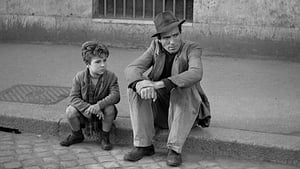Contact: [email protected]
Video Sources 0 Views

Bicycle Thieves Colorized 1948: Best Timeless Classic Revived in Color
Synopsis
[ez-toc]




Introduction
In the vast tapestry of old movies, certain classics stand as timeless pillars, shaping the very essence of cinema. Among them, “Bicycle Thieves Colorized,” directed by Vittorio De Sica in 1948, holds a special place as a cornerstone of Italian neorealism. Now, decades later, a colorized version of this cinematic gem, titled “Bicycle Thieves Colorized 1948,” has sparked both excitement and controversy. In this article, we embark on a journey to explore the legacy of Bicycle Thieves Colorized, the narrative nuances of the original film, and the impact of colorization on this revered masterpiece.
Read Media File Transfer Agreement: Terms and Conditions
Read FAQ
The Legacy of Bicycle Thieves Colorized: A Landmark in Italian Cinema
To comprehend the significance of Bicycle Thieves Colorized, one must delve into the rich landscape of Italian neorealism. Emerging post-World War II, neorealism aimed to capture the harsh realities of everyday life. Bicycle Thieves, with its raw portrayal of post-war Rome, epitomized this movement. Vittorio De Sica, a luminary in Italian cinema, skillfully crafted a narrative that transcended mere storytelling, capturing the essence of a nation grappling with the aftermath of war.
The socio-political backdrop of post-World War II Italy seeps into every frame of Bicycle Thieves Colorized. The film provides a poignant snapshot of the struggles faced by the working class, mirroring the societal challenges of its time. De Sica’s contribution to both neorealism and Italian cinema as a whole cannot be overstated. His ability to humanize characters and infuse authenticity into every scene solidifies Bicycle Thieves as a landmark in the annals of film history.
The Story Unfolds: A Synopsis of Bicycle Thieves Colorized
At the heart of Bicycle Thieves Colorized are the compelling performances of Lamberto Maggiorani and Enzo Staiola as Antonio and Bruno Ricci, respectively. The plot revolves around Antonio’s desperate quest to retrieve his stolen bicycle, a vital tool for his employment. The emotional resonance stems from the intricate father-son dynamics, adding layers of complexity to the seemingly simple premise.
As Antonio and Bruno navigate the post-war streets of Rome, Bicycle Thieves becomes a microcosm of societal struggles. Cesare Zavattini’s screenplay masterfully captures the agony of the working class, their hopes crushed by the theft of a mere bicycle. The film’s impact lies not just in its plot but in its ability to transcend the specific narrative, becoming a universal story of resilience and despair.
Exploring the Neorealism Aesthetic in Bicycle Thieves Colorized
Central to Bicycle Thieves Colorized’ enduring legacy is its commitment to neorealism aesthetics. De Sica’s decision to cast non-professional actors adds an authentic touch, blurring the lines between fiction and reality. The use of real locations in post-war Rome further immerses the audience in the palpable atmosphere of the time.
The theme of social class is a recurring motif in Bicycle Thieves Colorized. Antonio’s quest for his stolen bicycle serves as a metaphor for the struggles of the working class, highlighting the stark divides in post-war Italian society. The film’s power lies not in grandiose sets or extravagant performances but in its ability to reflect the harsh truths of the world it portrays.
Controversy and Consensus: The Reception of Bicycle Thieves Colorized 1948
When Bicycle Thieves Colorized first graced the screen in 1948, it garnered widespread acclaim, earning a place among the most revered films in history. However, the controversy arose years later when the decision to colorize this black and white masterpiece emerged. Critics and audiences questioned the necessity of altering a film already hailed for its artistic purity.
The colorization of Bicycle Thieves Colorized was not without purpose. The aim was to introduce the classic to a new generation, providing a fresh lens through which contemporary audiences could engage with its timeless narrative. Despite the noble intent, purists argued that the film’s original black and white aesthetic was integral to its impact, and any alteration risked diluting its essence.
The Visual Revitalization: Assessing the Impact of Colorization
The colorization of Bicycle Thieves in 1948 brings forth a dual perspective — a cinematic experiment aiming to revitalize an old masterpiece. The question arises: Does colorization enhance or diminish the film’s artistic integrity? The answer lies in the eyes of the beholder.
While the colorized version of Bicycle Thieves allows for a different visual experience, the challenge is to preserve the essence of the original. The film, honored with an Oscar and revered as one of the most influential in cinema history, raises the stakes for any attempt at enhancement. Does colorization breathe new life into the narrative, or does it risk overshadowing the brilliance of De Sica’s original vision?
Perception Through Time: Bicycle Thieves’ Enduring Relevance
As time marches forward, Bicycle Thieves continues to resonate with audiences across generations. Its portrayal of poverty and desperation transcends its immediate post-war context, capturing universal human struggles. The film’s enduring influence extends beyond neorealism, leaving an indelible mark on European cinema movements.
Today, when revisiting Bicycle Thieves, viewers are not merely witnessing a relic of the past. They are delving into a timeless exploration of the human condition, a narrative that transcends temporal and cultural boundaries. The enduring relevance of Bicycle Thieves lies in its ability to evoke empathy and understanding regardless of the era.
Preserving a Masterpiece: The Ongoing Debate on Film Restoration and Colorization
The ethical considerations surrounding the restoration of old films, particularly classics like Bicycle Thieves, are crucial. While the pursuit of wider audiences through colorization is commendable, it raises questions about preserving the director’s original vision. The delicate balance between reaching new viewers and safeguarding the cultural heritage of cinema prompts introspection within the film community.
Artistic vision and cultural heritage must coexist in the realm of film restoration. As technology advances, the responsibility to maintain the authenticity of classic works becomes increasingly challenging. Bicycle Thieves serves as a prime example of the delicate dance between progress and preservation, leaving cinephiles pondering the fine line between innovation and reverence.
Embracing the Past and the Present: The Dual Appeal of Bicycle Thieves Colorized 1948
The dual appeal of Bicycle Thieves lies in the ability to experience it in both its original black and white form and the colorized adaptation. Each version offers a unique perspective, allowing audiences to appreciate the film’s brilliance from different angles. The black and white version preserves the historical context and artistic purity, while the colorized iteration invites a contemporary audience into the emotional landscape of post-war Italy.
“Bicycle Thief” or “Ladri di biciclette” in its native Italian, stands as a testament to the enduring power of cinema. Whether in its original form or colorized adaptation, the film invites viewers to traverse the streets of post-war Italy, connecting with the struggles of its characters in a profound and timeless manner.
Conclusion
In the heart of Rome, amidst the echoes of post-war struggles, Vittorio De Sica crafted a masterpiece that transcends time — Bicycle Thieves. Whether you choose to experience it in the classic black and white or the colorized 1948 version, the film’s impact remains undiminished. As we navigate the ethical nuances of film restoration and colorization, let us not forget the essence of Bicycle Thieves — a cinematic journey that encapsulates the human spirit amidst adversity. Watch it in any format available, appreciate its timeless storytelling, and pay homage to a director who dared to capture the raw beauty of life on celluloid. Vittorio De Sica’s Rome awaits, inviting you to pedal through the cobblestone streets of cinematic history.


















